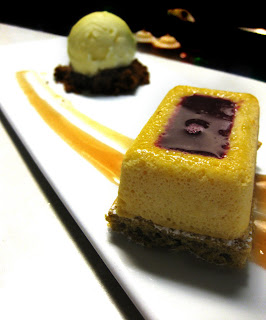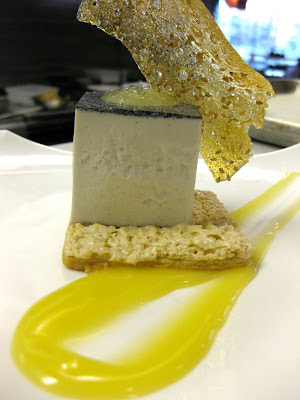

So I realize that it’s been a while. I would like to blame the chocolates, but in truth, it has been a combination of laziness and lack of material that kept me from posting. The special I made two weeks ago was nice, but needed a lot of work, and I decided to hold off on posting until I came up with something better.
The original idea for this weekend was a Li Hing Mui roasted pineapple. Its something that I have done before, and really liked, but didn’t get quite right the first time. The nice thing about pineapple is that it is pretty much a year-round fruit, which is ideal for a menu that doesn’t change seasonally. The Li Hing (which is made from dried sour plums, sugar and salt) is huge in Hawaii, and adds a fun complexity to the pineapple.
Li Hing Roast Pineapple | Yield: ~12 pieces |
| 2ea Pineapple 6oz sugar 1t Li Hing Mui 8oz Plum Wine | 1) Skin pineapple and cut into roughly 6 large batons per pineapple, removing the core 2) Combine sugar and Li Hing Mui 3) Toss sugar with pineapple batons and place in a roasting dish 4) Add the plum wine to the pineapples, and roast at 350° for about 45 min, or until soft |

When I think pineapple, I think coconut. I decided to take a page from Ferran Adria, and try my hand at the “micro-sponge.” One combines all the ingredients in a foam siphon, and dispenses into paper cups. The mixture is then microwaved. The result is an incredibly light, moist sponge that tastes faintly of coconut and sort of like sweetened condensed milk. The key to the sponge is getting it to unmold without deflating. It is so light that if it is handled too much, or if it isn’t cooked enough, the air pockets in the sponge collapse.
Another flavor that I think is a must with pineapple is vanilla. Truth be told, vanilla is a good flavor to go with most things. Few people give vanilla the credit it deserves. I decided to incorporate vanilla onto the plate in the form of another new concept to me: fluid gel.

As the name suggests, fluid gel is a gel (usually set with agar agar or gellan gum) that has been vigorously agitated while it set, so that the end result is a consistency similar to a reduction or gravy. Fluid gels are really useful in situations where the flavor is damaged with heat (things like mellon which, trust me, should be left as close to uncooked as possible), in either sweet or savory applications. I recently ordered a few fun ingredients to play around with, one of which is powdered agar agar. I have tried working with the flakes, but they require a long time to soften, and then must be boiled for a long time in order to ensure that they dissolve, which it never seems to do fully. The powder, however, can just be added straight into your liquid and dissolves readily.

For me, I took the roasting liquid from the pineapple and added agar agar at 1.5% of the total weight (in other words 1.5g for every 100g of liquid), boiled for 2-3 min, and then poured into a container to set. Once set, I popped it into a blender, and blended for a few minutes, or until completely smooth.
I finished the plate with a scoop of caramel ice cream on top of a coconut crumble, to anchor it to the plate, and a pineapple chip on top.














